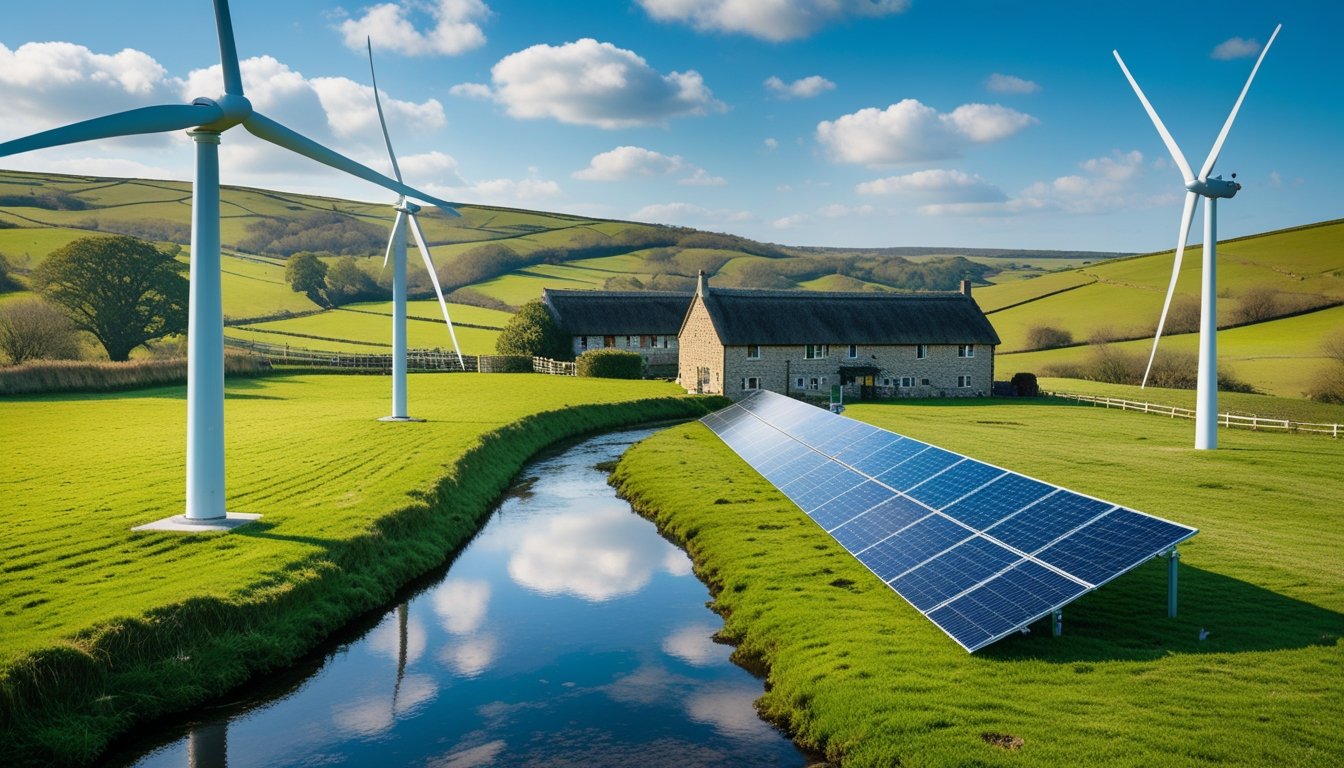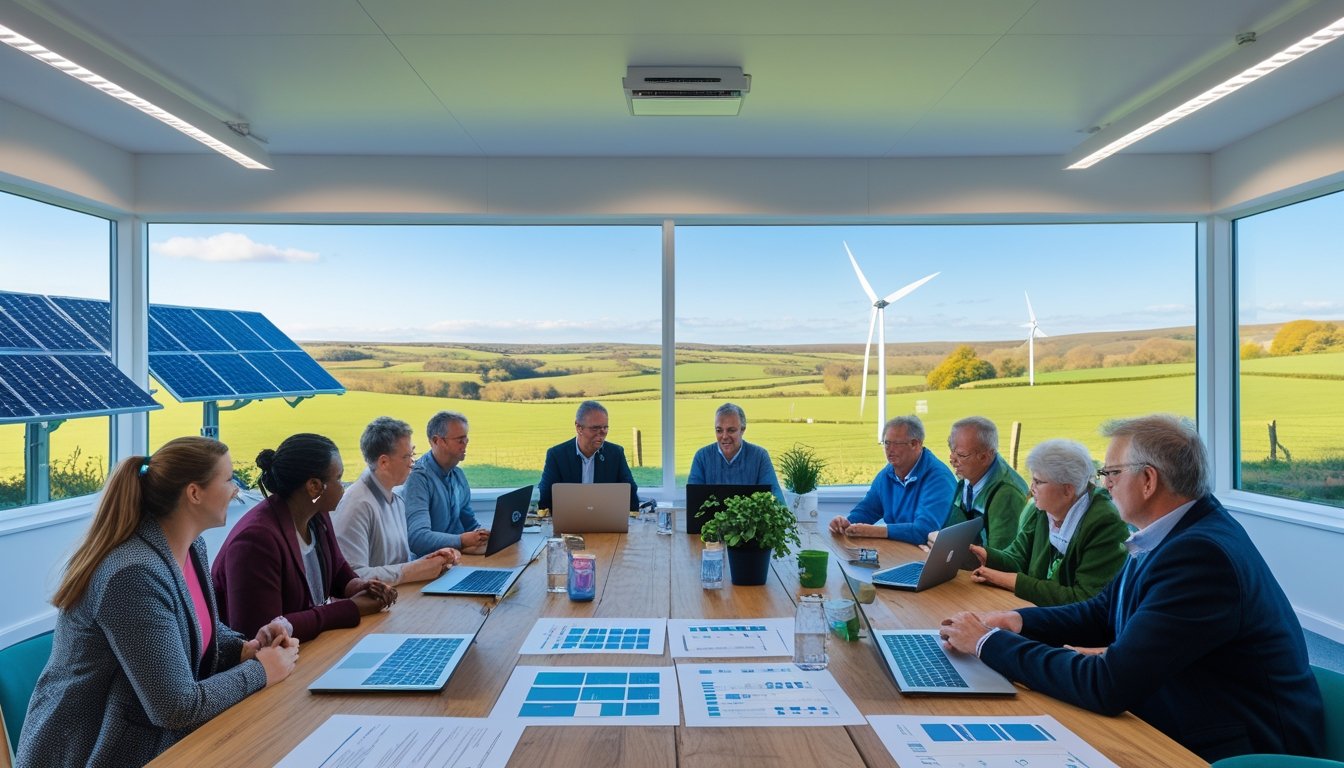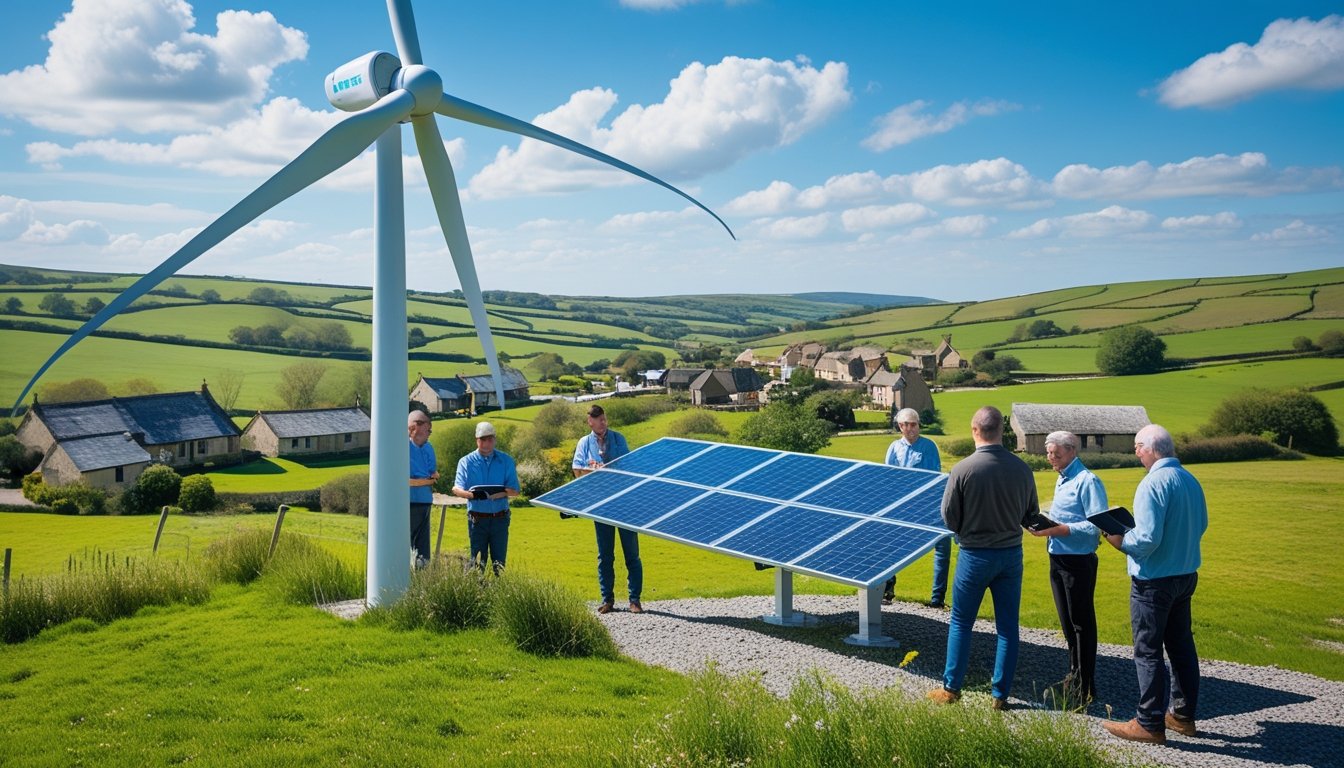Late updated: 25 Jul 2025 11:07
Written by: Oliver Bennett
Revolutionising Rural UK's Renewable Energy Solutions: Innovations and Opportunities
In the heart of the rural UK, an energy transformation is quietly taking shape. As we stand at a pivotal moment in renewable energy development, rural communities are emerging front-runners, intricately interwoven with sustainable and efficient energy solutions. This shift is not merely a trend; it is an essential innovation in our journey towards a sustainable future.

Government initiatives and community projects are at the forefront of this revolution, enabling localised renewable energy solutions that address unique challenges these regions face. New policies and funding, such as the Rural Community Energy Fund, are empowering communities with the resources and knowledge required to spearhead this transition. These efforts provide not only environmental benefits but also invigorate local economies and enhance social cohesion.
In harnessing these renewable energy solutions, rural UK communities are creating resilient systems that are adaptable to the changing demands of the future. As we dive deeper into exploring these pioneering developments, it's clear that the rural UK's leadership is setting a benchmark for sustainable energy solutions worldwide—offering lessons and inspiration for similar regions globally.
Key Takeaways
- Rural UK leads in renewable energy innovation.
- New policies enable local energy projects.
- Rural efforts boost sustainability and resilience.
Transformative Renewable Energy Solutions Pioneering Rural UK
Renewable energy innovations are set to change rural UK landscapes. By integrating solar power, onshore wind, biomass, and green hydrogen, we can improve energy independence and security for rural communities.
Solar Power and Battery Storage for Farms and Communities
Solar power is revolutionising the energy landscape for rural UK farms. By installing solar panels and establishing solar farms, we can harness clean, unlimited energy from the sun. These systems are increasingly supported by battery storage, which allows energy to be stored for use when sunlight is unavailable.
Battery storage systems are pivotal for energy stability, making solar power a reliable source even in cloudy conditions. As farmers and local communities adopt solar power, operational costs decrease and carbon footprints shrink. This transition not only supports energy independence but also strengthens economic resilience for rural areas through reduced reliance on national grids.
Deploying Onshore Wind Energy and Wind Farm Innovations
Onshore wind energy continues to flourish in rural parts of the UK. Wind farms generate electricity by capturing wind with turbines, providing an efficient renewable energy source. Our focus on improving turbine technology means that wind energy is becoming more reliable and cost-effective.
Innovations in turbine design and placement enhance energy output and reduce noise pollution, making them a more sustainable option for rural settings. This development connects rural areas to new streams of income through community-owned wind farms, offering local ownership and economic benefits. With government support and community participation, onshore wind can be a cornerstone of rural energy transformation.
Biomass and Green Hydrogen for Rural Energy Independence
Biomass energy and green hydrogen are emerging as transformative forces for rural energy independence. Biomass, derived from organic materials, is used to produce heat and electricity, offering a sustainable energy source that utilises local agricultural waste.
Green hydrogen, produced through electrolysis powered by renewables, represents a clean and efficient energy carrier. It supports diverse applications from fuel cells to heating. In combination, biomass and hydrogen create a flexible energy hub that reduces dependency on imported fuels. By tapping into these resources, rural areas can secure their energy needs while stimulating local economies.
Modernising Rural Infrastructure to Support Energy Security
Infrastructure modernisation is essential to rural energy security. Traditional energy grids are often outdated, making it difficult to fully integrate renewable sources. Upgrades are necessary to support about new technologies such as smart grids and microgrids.
These advancements permit better distribution and management of power, increasing resilience against outages. They also help optimise energy use by connecting rural areas with more efficient systems. Leveraging data and digital tools, infrastructure modernisation enhances the capacity to handle intermittent renewable sources, ensuring sustainable energy delivery. This modernisation is a critical component of a sustainable energy future for rural UK.
Policy, Grants, and Sustainability in Rural Renewable Transition

Policy initiatives and financial incentives play a pivotal role in facilitating the transition of rural areas in the UK towards renewable energy solutions. Reducing carbon footprints, phasing out fossil fuels and adopting sustainable practices are critical for tackling climate change.
Government Grants and Financial Incentives for Rural Projects
The UK government provides an array of financial incentives and grants to bolster renewable energy projects in rural areas. Programs like the Feed-in Tariffs (FIT) and Renewable Heat Incentive (RHI) have been instrumental. These schemes reward individuals and communities for producing clean energy through solar panels, wind turbines, or heat pumps.
Additionally, organisations such as the Foundation for Rural & Regional Renewal (FRRR) offer climate solution grants. These grants help communities develop projects aimed at reducing emissions and enhancing energy efficiency.
By leveraging such financial resources, we can make significant strides in adopting renewable technologies, ultimately reducing dependency on traditional energy resources.
Reducing Carbon Footprint and Greenhouse Gas Emissions
Minimising our carbon footprint and reducing greenhouse gas emissions are fundamental aspects of sustainable development. Rural renewable energy initiatives aim to transform how energy is consumed and produced. Utilising solar energy and wind power are effective strategies for decreasing emissions.
Implementing energy-efficient practices further complements these efforts. By focusing on adopting technologies such as energy-efficient lighting, improved insulation, and modern heating systems, we contribute to the national emissions reduction targets set forth by the government.
Together, these approaches showcase how targeted policy measures can achieve tangible environmental benefits.
Phase-Out of Fossil Fuels: Oil and Natural Gas Alternatives
Rural regions often rely heavily on fossil fuels such as oil and natural gas. Transitioning to renewable energy sources is essential for reducing this dependency. The shift towards alternatives like biomass, solar power, and wind energy presents opportunities to meet energy demands sustainably.
Furthermore, embracing electric vehicles and promoting the use of heat pumps offer substantial benefits. These initiatives are pivotal as part of the broader strategy to retire fossil fuel-based systems, reducing their adverse environmental impact substantially.
Increasing awareness and support from policy makers will play a critical role in accelerating this transition.
Environmental Sustainability and Climate Change Adaptation
Environmental sustainability must be at the forefront of rural energy transitions. Emphasising resilience against climate change, these transformations enhance the adaptability of rural areas. Renewable energy projects not only foster ecological balance but also stimulate local economies.
Implementing adaptive strategies such as sustainable farming practices and maintaining biodiversity ensures long-term viability. Renewable systems contribute by providing reliable energy, which can withstand the impacts of adverse weather conditions exacerbated by climate change.
This holistic approach contributes to the resilience and prosperity of rural communities while ensuring a better future.
Frequently Asked Questions

In addressing the transition to renewable energy within rural UK, we delve into advancements, community involvement, and government initiatives. Funding options and technological roles are essential, as are the challenges we face.
What are the latest advancements in renewable energy for rural areas in the UK?
Recent progress in renewable energy has seen rural areas install more wind turbines and solar panels. These technologies address the need for sustainable energy and reduce reliance on outdated infrastructure. Emerging technologies such as battery storage systems are also gaining traction, helping to maintain a steady power supply in less populous regions.
How can local communities participate in the transition to renewable energy?
Local communities can engage by forming energy cooperatives, which empower residents to take collective action in renewable energy projects. Participating in government schemes and local discussions allows communities to voice their needs and contribute to shaping initiatives. Workshops and training sessions can further equip individuals with the skills needed for this energy shift.
What financing options are available to support rural renewable energy projects?
Various financing options, including grants, government subsidies, and community fundraising, support rural renewable initiatives. Programmes such as the Rural Community Energy Fund provide financial support to projects with economic and social benefits. Banks and private investors also offer loans tailored for renewable energy developments.
How is the UK government supporting rural areas in adopting renewable energy solutions?
The UK government supports rural adoption of renewables through funding programmes and policy frameworks. Initiatives like the Renewable Heat Incentive offer financial benefits for using low-carbon heat systems. Policies promoting infrastructure upgrades further aid in overcoming logistical challenges, ensuring efficient integration of these energy sources.
What are the main challenges faced by rural UK in moving towards renewable energy?
Rural UK encounters significant hurdles, including limited access to infrastructure and high initial costs for renewable installations. Remote locations and varying geographical conditions complicate deploying energy solutions evenly. Overcoming these challenges requires tailored solutions that consider the unique aspects of different rural areas.
What role does technology play in enhancing renewable energy efficiency in rural settings?
Technology is pivotal for increasing efficiency. Smart grids optimise energy distribution, while advanced storage technologies address intermittency issues. Monitoring and forecasting tools help manage production and consumption patterns, ensuring resources are allocated effectively, ultimately leading to a more reliable energy supply in rural settings.
